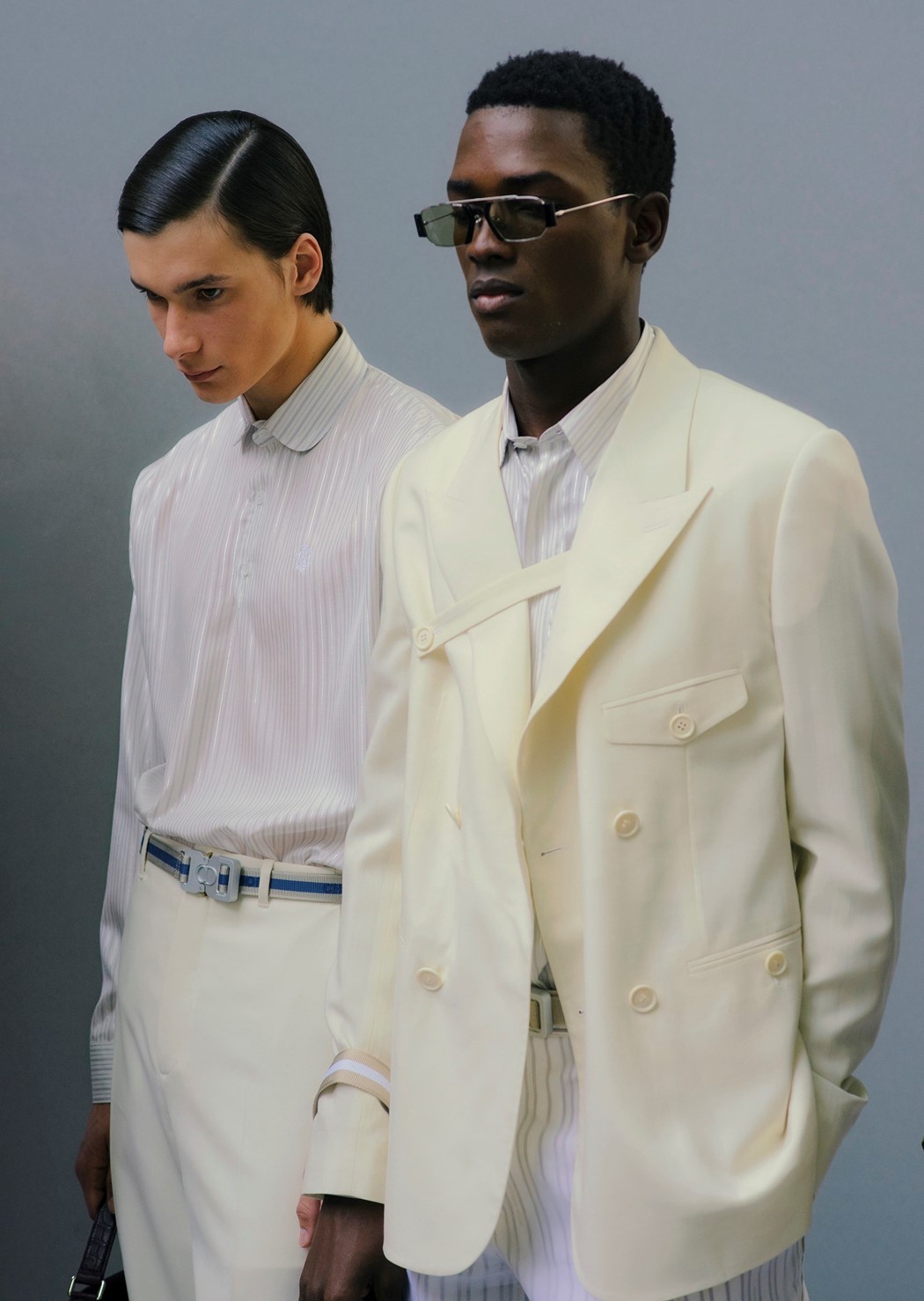Kim Jones' collection for Dior Men marked the high point of this season's glut of designer debuts (Virgil for Louis Vuitton, Jacquemus's first menswear collection, Galliano's first Artisanal menswear show). After the blockbuster Vuitton show just the day before, all eyes were on Jones to deliver his interpretation of what's now called Dior Men, a change from the Dior Homme of old.
Jones' move to Dior during LVMH's creative shake-up makes sense. His collections for Louis Vuitton had consistently been one of the biggest definers of what luxury menswear could be, if you could remove him from the pigeonhole of a 'streetwear designer'. For years, he dressed the Vuitton man in expensive fabrics, relaxed tailoring and recognisable accessories, spearheading many street style trends (think: schoolboy shorts, silk bomber jackets, bumbags worn crossbody). It was desirable and aspirational, but the clothes had essentially no historical codes to follow (ready-to-wear was only introduced by Marc Jacobs in 1997), and were often relegated to supporting the accessories. Now, with the backing and archive of one of the most famous couture ateliers in the world, Jones' proposition on what his Dior Man could look like might be the most significant update to menswear in recent years.

You couldn't talk about this show without addressing the elephant in the room - the elephant being a ten-metre tall KAWS sculpture made entirely out of multicoloured flowers. Jones has been a long time fan of the artist’s work, calling KAWS as one of our generation's most important creative figures. Dior legacy is obviously heavily intertwined with flowers, so putting the two together made sense, even if there was a nagging sense of one-upmanship over Raf Simons’ couture debut at Dior 6 years ago.
On the runway, Jones looked to Christian Dior's couture archives for details to interpret for menswear. Feather embroidery by Maison Lemarié and Janaina Milheiro showed up on button downs in extraordinary detail; and soft, feminine fabrics like organza draped the Dior boys loosely. A charmingly relaxed brown coat worn over a baby blue boiler suit (Look 8) flowed so perfectly that it dared you to doubt Dior's craftsmanship abilities. A nod to Monsieur Dior's original toile de jouy wallpaper on the Avenue Montaigne boutique was worked onto everything from a vest to trousers. Other highlights included a crisp side-buttoned suit rendered in a confident pink, referenced from a 1955 couture collection; and the reworking of the Saddle Bag into a backpack, first reintroduced by John Galliano for the SS00 collection.
All these references and nods to different points of the house of Dior’s history, once again, make complete sense. It follows a formula that has worked for other designers, especially those taking over historic houses with a buffet of archives to revisit. In Jones’ case, all the logic and sense resulted in a collection full of beautiful pieces and short on a clear personal view on the part of the designer. His choice to play it safe for this debut might very believably have been a corporate one. I am convinced that many pieces – at every price point – are sure to sell well.Otherwise, it might be that his idea of Dior will simply take a few more seasons to materialise.










